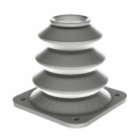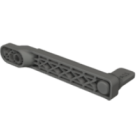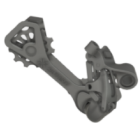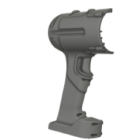Is 3D printing profitable?
3D printing has matured into a commercially viable technology that powers startups, side hustles, and industrial operations alike. But is 3D printing profitable? The answer is: it can be — with the right setup, market fit, and strategy. Whether you’re offering customized parts or on-demand manufacturing, understanding where the value lies is key to turning prints into profits.
Profitability depends on value, not just cost
One of the biggest advantages of 3D printing is its ability to create high-value parts at relatively low volume. Unlike traditional manufacturing, there’s no need for expensive tooling or molds — which is a game-changer for short runs, product iterations, or customization.
However, profitability isn’t guaranteed by the technology itself. It comes from delivering real value, controlling costs, and tapping into the right market. A print that costs €5 in materials might sell for €50 — or just €10 — depending on who it’s for and what problem it solves.
However, the true cost of production includes much more: machine amortization, electricity, manual labor, and even failed prints — all of which should be considered when pricing a 3D printed part.
Business models that drive profit
3D printing can serve a wide range of business types. Some of the most proven approaches include:
- on-demand printing services for clients who need functional prototypes, custom tools, or rapid iterations,
- selling original or customized products like accessories, cosplay parts, architectural models, or industrial brackets.
These models work especially well when you combine technical precision with design freedom — something few other production methods can offer at low volumes.
Profit margins in 3D printing
Margins vary widely across sectors, but many 3D printing businesses report gross profit margins of 30–70%. The most profitable niches tend to:
- require complex or customized geometries,
- serve industries where speed and design flexibility are mission-critical,
- avoid price-driven commodity markets.
Post-processing, material selection, and build optimization all play roles in controlling cost and increasing value per part.
How much money can you make?
Your revenue potential depends on the scale, technology, and customer segment you serve. A single desktop printer running occasionally might generate a few hundred euros per month. In some cases, small farms of industrial 3D printers can approach six-figure annual revenues, particularly when focused on specialized services or recurring contract work. That said, this outcome requires high utilization, effective process control, and access to customers willing to pay for added value — making it achievable, but not guaranteed.
Successful operations often focus on B2B applications, where reliability, precision, and repeatability matter more than low cost alone.
Is 3D printing a good business?
If you’re strategic about your offerings and focused on solving problems, then yes — 3D printing can absolutely be a good business. It’s particularly suited for:
- custom manufacturing at low to medium volume,
- fast prototyping cycles for product development,
- niche markets with high product differentiation.
It’s not about “printing whatever sells”. It’s about leveraging the unique strengths of additive manufacturing — speed, complexity, and flexibility — to deliver what traditional methods can’t.
Final thoughts
So, can 3D printing make money? Yes, and in many cases, it already does. The key lies in understanding your customers, selecting the right applications, and optimizing for both quality and efficiency. Whether you’re a small operator or scaling toward industrial-grade production, 3D printing offers a profitable path — as long as you match capability with demand.
Explore also
- How to calculate 3D printing cost?
- Factors affecting print cost
- 3D printing: in-house vs outsourcing
- Is 3D printing cost-effective for production and prototyping?
- Is buying a 3D printer worth it in 2025?
- How much is 3D printing?
- How to reduce 3D printing cost
- Do 3D printers use a lot of electricity?
Related categories













